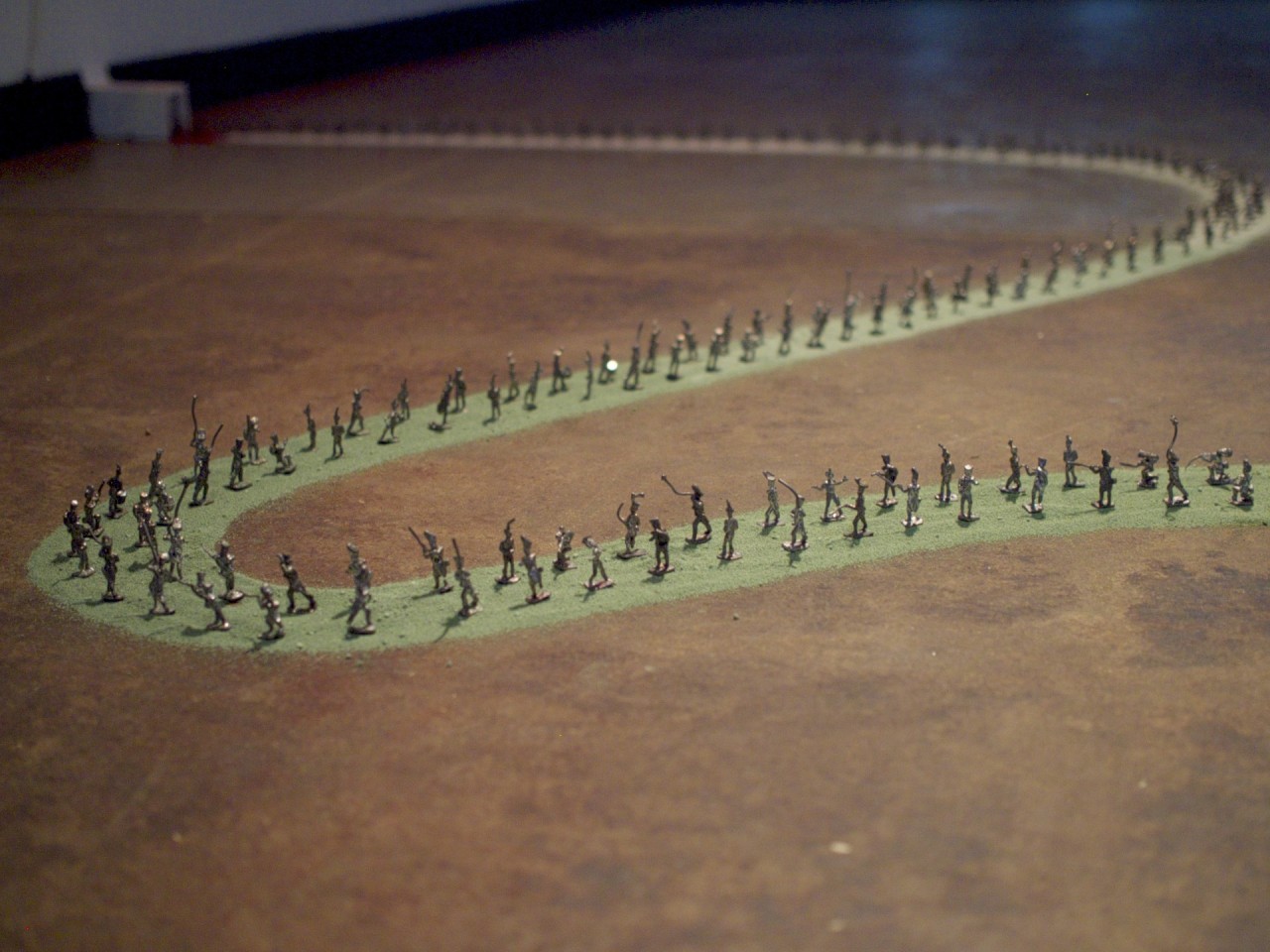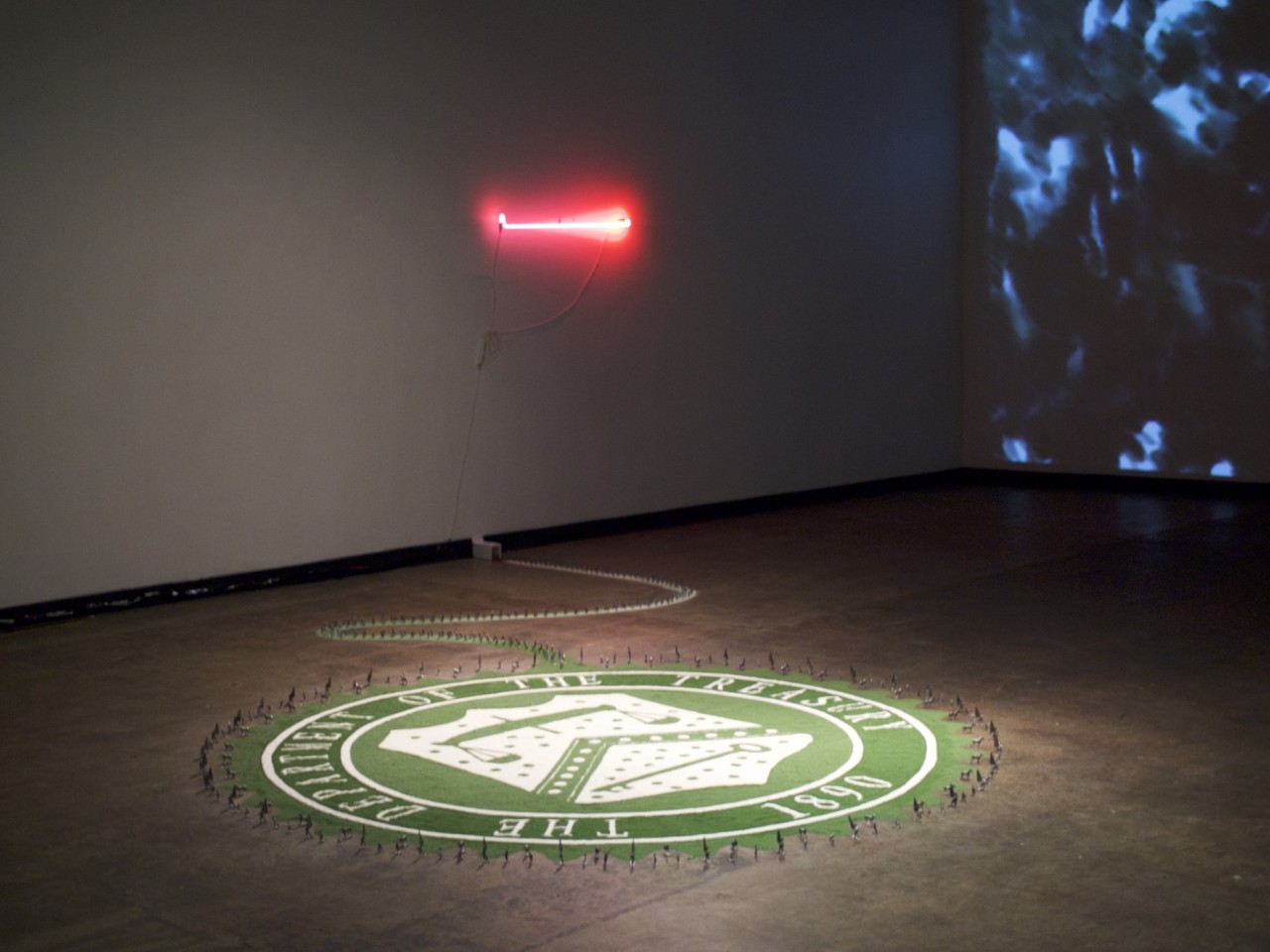Tony Stallard | Ghost Dance
October 7–November 13, 2016
Opening reception: Friday, October 7 at 7 pm
’“It was written I should be loyal to the nightmare of my choice.” ― Joseph Conrad, Heart of Darkness
In Sand, Neon, Lead, and video, British sculptor Tony Stallard’s new work addresses the nature of cultural history and how we examine it in historical contexts or museums, questioning the contemporary mythologies of our places. Stallard’s work with light has led him from one Northern place to another, and speaks particularly to Canada’s northern cities as the nights grow longer.
Critical Ambiguity
T.J. MacLachlan unpacks the work of Tony Stallard
If you can accept (as I do) that art employs ambiguity to various degrees and techniques, then its role in the gallery specifically and day to day experiences generally deserves some thought. I would like to consider it as both a defining feature of art as well as the problematic ground for potential erasure.
Rosalind Krauss, in “Notes on the Index”, highlights a linguistic device that, I suspect, can be found in most artistic gestures: a shifter. A shifter is an empty sign that is filled with meaning through context: "The word 'this' is such a sign, waiting each time it is invoked for its referent to be supplied. 'This chair,' 'this table,' or 'this...' and we point to something lying on the desk.”1 The significance of the object relies on juxtaposition with some additional element to inform it. As a linguistic unit, the shifter depends on ambiguity to maintain a vacuum that the viewer can fill with significance.
Ambiguity brings an experience to the gallery that I, the viewer, activate. It takes time and engagement to overlay significance onto the art-object when understood as a shifter. In coming to terms with an ambiguous experience, I participate in the negotiation of meaning, probing and questioning the artwork, finding what best fills the vacuum produced through ambiguity. This approach has a precedent in the ideas of literary theorist William Empson who claimed that “the machinations of ambiguity are among the very roots of poetry.”2 Empson points to fissures in language as the place where poetry transcends words to become art. Perhaps the allure of ambiguity is the capacity to find myself. A quiet narcissism. A benign solipsism. My own concerns will be rearticulated in my reading of the artwork. I have agency.
But no object is quite so ambiguous. Material, delivery or content, the experience of art will bring with it some biography. When an object that is already full of significance is handled as a shifter, the history and depth of that experience risks being erased in the name of ambiguity. Appropriation, as a case in point, limits and erases the depth of significance in the name of aestheticized ambiguity. The bodies and gestures of another person are rendered empty. Who are you to me? What can I make of you? ‘I’ and ‘you’ are two more shifters that mean differently depending on who speaks.
What is imperative in a conversation about appropriation is a constant mindfulness towards what is and is not a shifter. The viewer has agency to find meaning in objects. There is the possibility to see objects as an empty sign, ready to be filled through the act of viewing but the nefarious flip side to this is that the history of an object will be erased; a homogenizing act that reduces a sound, image, or object to mere aesthetic. Ambiguity sets the stage for a rich artistic experience, but achieves this by peeling back contexts and histories in order to create a more or less empty sign.
This relationship between shifters, ambiguity and appropriation is not as discreet as words make it sound. In front of an object we will arrive at a meaningful understanding without acknowledging the factors that affect our experience. When an artwork fronts difficult issues, criticality—the ability to consider what’s not being said—enables viewers to assert agency. Ambiguity, this vital characteristic of art, thrives in a vacuum and corrupts a plenum.
1. Rosalind Krauss, “Notes on the Index: Seventies Art in America.” October. 3 (Spring 1977),
69. ↩
2. William Empson, Seven Types of Ambiguity (New Directions, 1966), 3. ↩
-
T.J. McLachlan is an artist living on the Canadian prairies. After receiving a BFA in Critical and Cultural Practices from Emily Carr University of Art and Design he is now a graduate student at the University of Alberta where he has received a Social Sciences and Humanities Research Council Grant to study the role of systemic privilege in meaning-making processes. Embracing an interdisciplinary approach, he looks to find connections among disparate fields such as Linguistics, Critical Race and Whiteness Studies to inform his artistic research.



